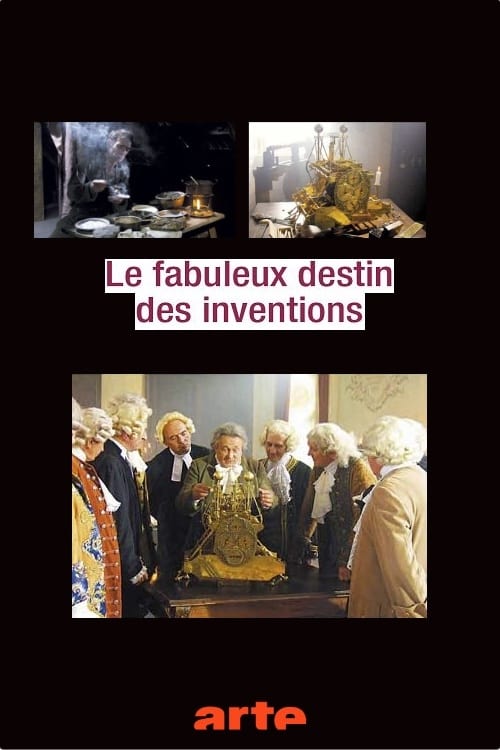
Season 1
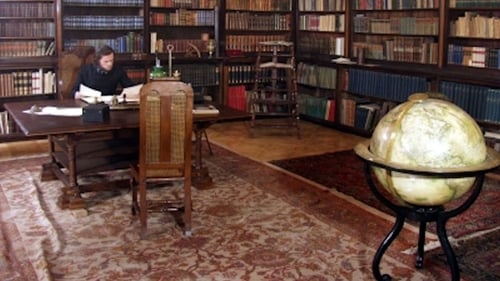 NaN/100 votesLoading...
NaN/100 votesLoading...Last Chance Trans-Atlantic
Season 1 Episode 1 - Aired 5/12/2002
Connecting two continents underwater by cable marked the beginning of a new age. It was a story of near superhuman effort, daring and innovation. It was the vision of one man, who overcame adversity as he experienced the adventure of his life. The laying of the first transatlantic telegraph cable was a project full of fame and ambition, of defeat and ruin. The year was 1857. A young New Yorker by the name of Cyrus Field had retreated from business life at the age of 30. He had already earned a fortune with his paper company. Now, he wanted to travel and enjoy the good things in life. Instead, his future took a different turn. An English engineer talked him into joining a very ambitious project: a telegraph line between Newfoundland and New York to speed up the exchange of news from Europe to America's business capital. Field agreed and came up with an even bolder plan: why not run the cable all the way across the Atlantic! A new age was dawning: steam ships, the railroad and the telegraph were all making the world smaller, but Europe and America were still more than a week's journey apart. To manufacture a cable of such immense length and then to stretch it along the seabed of the stormy North Atlantic was a challenge of shear awesome dimensions. Cyrus Field would end up spending 12 years of his life obsessed with this dream. Again and again, he drummed up enormous infusions of capital to finance his plan, he lobbied the English and American governments to support the project and convinced renowned scientists of his day - such as Morse, Faraday and Kelvin - to join the endeavor. Western Union, however, a major American telegraph company, was developing its own plan to connect Europe and America and thus became a rival of the ambitious Cyrus Field and his New York-London Telegraph Company. Field was confronted with repeated setbacks. On one occasion, ferocious seas tore the cable from a ship; another time, engineers ruined the line; and then the American Civil War stopped the project altogether. But on a spring day in 1866, the world's largest ship, Great Eastern, could be found anchored off the coast of Ireland. In its hold, some 8,000 tons of cable. It is Field's last chance. He had mortgaged his entire fortune. The laying of the first transatlantic cable is one of the most exciting and dramatic stories in science. Ever since, the world has been 'wired'. The story unfolds before your eyes and Axel Engstfeld's camera. Today, a network of ocean cable connects the continents. Optic fiber cable allows 100 million telephone conversations simultaneously. But it would all have been unthinkable had it not been for the enterprising zeal, determination and innovative energy of Cyrus Field and his 'Victorian Internet'.
Director: N/A
Writer: N/A
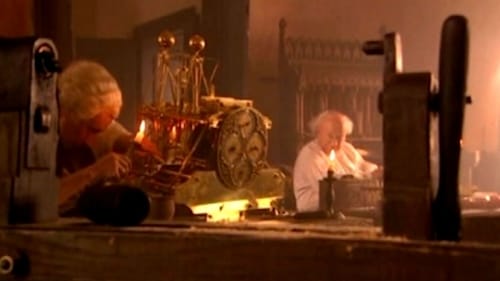 NaN/100 votesLoading...
NaN/100 votesLoading...Decision Longitude
Season 1 Episode 2 - Aired 5/19/2002
Knowing the precise coordinates of a ship is absolutely essential for a captain and his crew. It took centuries, however, before navigating the open seas lost its ominous and frightening character. Columbus, Da Gama or Drake - they all reached foreign shores more by accident than anything else. They knew how to determine what latitude they were at by checking the position of the sun, but the longitude could only be roughly calculated. The English called this method 'dead reckoning', and indeed, it was often fatal. The year 1707 witnessed a tragedy. Off the southern coast of England, Admiral Shovell and his fleet were bearing down on the dreaded Scilly Islands in foggy weather. The ships were smashed to pieces on the murderous rocks. Two thousand seamen lost their lives. The government decided to act and decreed that a prize worth 20,000 pounds would be awarded to the man or woman who found a reliable method to precisely calculate longitude at sea. For centuries, renowned scholars had tried and failed to find an answer - from Galileo to Isaac Newton. But no meaningful progress was made until an ordinary Scottish clockmaker came up with a trailblazing invention in the 18th century. Award-winning author Axel Engstfeld follows one of the most dramatic adventures of science which led to a turning point in the history of maritime navigation. It was a discovery of immense importance that would have consequences up to the present day. The key to determining longitude - then as now - is: time! The royal astronomers looked to the stars for a solution, hoping some heavenly clock visible from anywhere in the world could help calculate a longitudinal position. Unfortunately, at sea this was an extremely complicated procedure. The Scottish clockmaker John Harrison, on the other hand, put his faith in the precision of his chronometers. He decided to build a timepiece, the likes of which the world had never seen. In an age where clocks were considered accurate if they lost only a few minutes per day, Harrison built an instrument that lost only a few seconds per month! He was obsessed with the idea and spent his entire life working on ways to determine the exact longitude with the aid of precise chronometers on swaying ships in different climate zones. A relentless race began: famous scholars of the day versus a self-taught Scotsman, the king's established scientists against an eccentric tinkerer, erudite teachings espousing a logical universe up against a tiny, ticking timepiece. This race is dramatically depicted in Engstfeld's film. Re-enacted scenes are combined with footage from the original locations in England and the Caribbean. Ship voyages across a seething Atlantic and archive material intertwine to become a suspense-filled mosaic. An exact replica of Harrison's famous clock, the H1, was reconstructed especially for this film. The world's most precise chronometer today can be found in the United States. At Falcon Airbase in Colorado, it synchronizes the satellites used for the Global Positioning System, GPS. The search for a way to measure longitude proved to be one of the greatest adventures in seafaring history.
Director: N/A
Writer: N/A
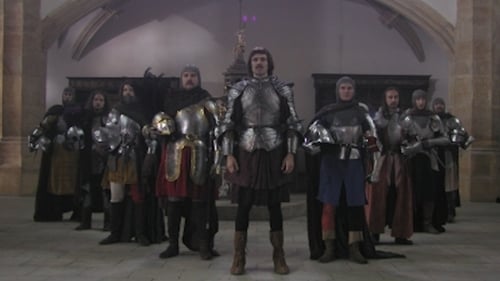 NaN/100 votesLoading...
NaN/100 votesLoading...Breakthrough at Cap Fear
Season 1 Episode 3 - Aired 5/26/2002
Daring Portuguese seafarers journeyed into the unknown in the early 15th century. They sailed to regions that had previously been considered unreachable, even nonexistent. And they sailed on ships that were specially developed for this purpose. For the Portuguese, the world in those days was flat. They knew Europe, North Africa and Asia Minor. The Atlantic, on the other hand, was an ocean of darkness. Cape Bojador on the West African coast, across from the Canary Islands, marked the end of the known world. Beyond was a realm of terrifying sea creatures. No seafarer had ever returned from there alive. Don Enrique, a Portuguese prince who found his way into the annals of history as Henry the Navigator, was obsessed with the idea to explore the unknown parts of Africa. He dreamt of fabulous wealth and sought allies in the fight against the despicable Moors. He dispatched expeditions to overcome Cape Fear. He founded a center of science in Sagres and brought the best cartographers, mathematicians, astronomers and navigators to his court. It was the beginning of a new age - the dawning of the modern era. In 1434, one of his captains actually succeeded in sailing past the dreaded promontory, returning home alive to tell about it. The mission was probably more accidental than anything because the prevailing winds required pointing into the wind - something Portuguese ships of that day were incapable of doing. In order to sail further south it was necessary to design a completely new type of ship. In the years that followed, just such a ship was systematically developed under the aegis of Henry the Navigator. The lightweight ship, known as a caravel, became the workhorse of Portuguese and Spanish explorers. Much like the space shuttles half a millennium later, the caravel carried a small crew squeezed into a tiny space, was packed full of food and water with no stove for warm meals and had no special sleeping quarters for those on board. But the caravel flung the door open to a new world. The first precise maps of the African coast ensued, but were kept secret when the first traces of gold were found. When the Portuguese explorers finally met up with the indigenous populations, history took a dramatic turn. During shooting for the documentary, Portuguese archeologists made a sensational discovery. Off the coast of Porto they found the exceptionally well-preserved remnants of a ship from the time of Henry the Navigator. Is this the first discovery of a caravel? With this documentary, the German National Film Award holder, Axel Engstfeld, undertakes a journey through time. The film catapults us back to 15th century Europe with extravagant scenes. The impact of this pioneering era unfolds before our eyes, juxtaposed between historical fact and modern scientific methodology. In the course of just one generation humanity's view of the world was turned upside down with breathtaking speed, preparing the way for journeys to America by Columbus and to India by Vasco di Gama. But before them, stood the caravel and the Breakthrough at Cape Fear.
Director: N/A
Writer: N/A
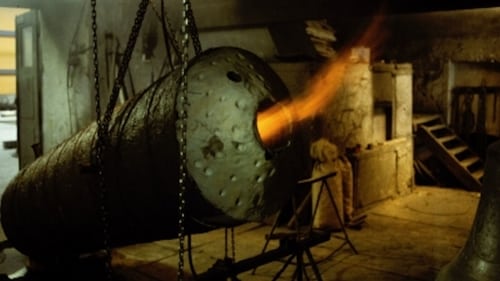 NaN/100 votesLoading...
NaN/100 votesLoading...The Empire attacks
Season 1 Episode 4 - Aired 6/2/2002
For astrologers, the year 1588 stood under a bad sign. They predicted chaos and conflict around the world. And this prophesy was to become reality as the Spanish armada approached the English coast. 130 ships and 30,000 soldiers were preparing to invade the British Isles. The world's largest fleet against a handful of English ships captained by a few daring pirates. The battle raged for five days and nights until the Spanish succumbed. A new kind of canon played a significant role in their defeat. At the time, the city of Innsbruck in Austria was Europe's gun-making center and the Löffler family were the Middle Ages version of the Krupps. The canons poured in the Löffler foundries were far superior to any others in range, power and precision. The method for forging these guns was a closely held secret. In 1580, a man named Adam Dreyling fled to England. He had learned the art of making canons from his uncle, Hans Christoph Löffler, and now held the Habsburg's greatest state secret in his hands. Spies smuggled him to Venice and then to England, where his expertise was urgently needed. England's queen knew that war with Spain was unavoidable. For decades the conflict had been simmering between the protestant ruler and catholic Europe. Philip of Spain was bent on toppling her, whatever the cost. English admirals thought up a new strategy to confront the overpowering Spaniards. Mathew Baker, a mathematician and shipbuilder, listens to the tales of successful pirates like Drake and Frobisher and builds small, fast and maneuverable ships equipped with long-range, precision canons to keep the Spaniards at bay. The guns made by Adam Dreyling could be the key. The centerpiece of this film is a volatile mixture of world history on a grand scale and personal drama. The inventiveness and artistry of the foundry man from Tyrol is a small building block for England en route to becoming a globe-spanning empire. Film-maker Axel Engstfeld follows the gun-making trail. At a foundry in Innsbruck he has the old 16th century canon cast in the old-fashioned method. The company, Gebrüder Grassmayr, is the world's leading foundry for casting bells. The family business is in its 14th generation, but hasn't cast any canons since the Thirty Years War. What made Dreyling's canons so superior? An experiment for the film and for the foundry.
Director: N/A
Writer: N/A